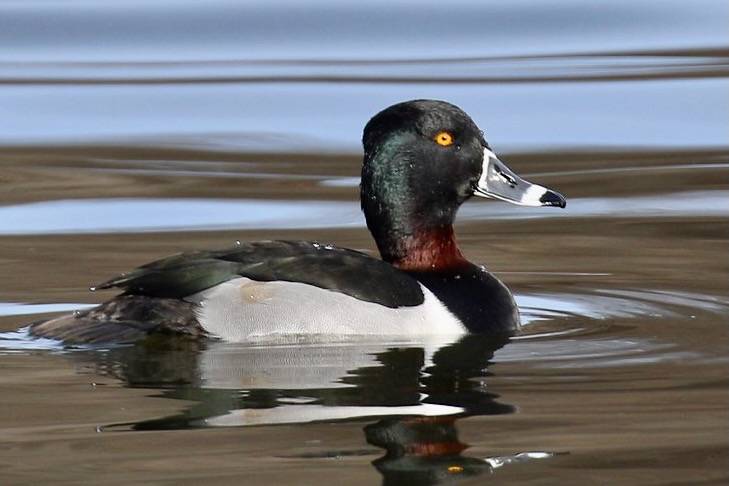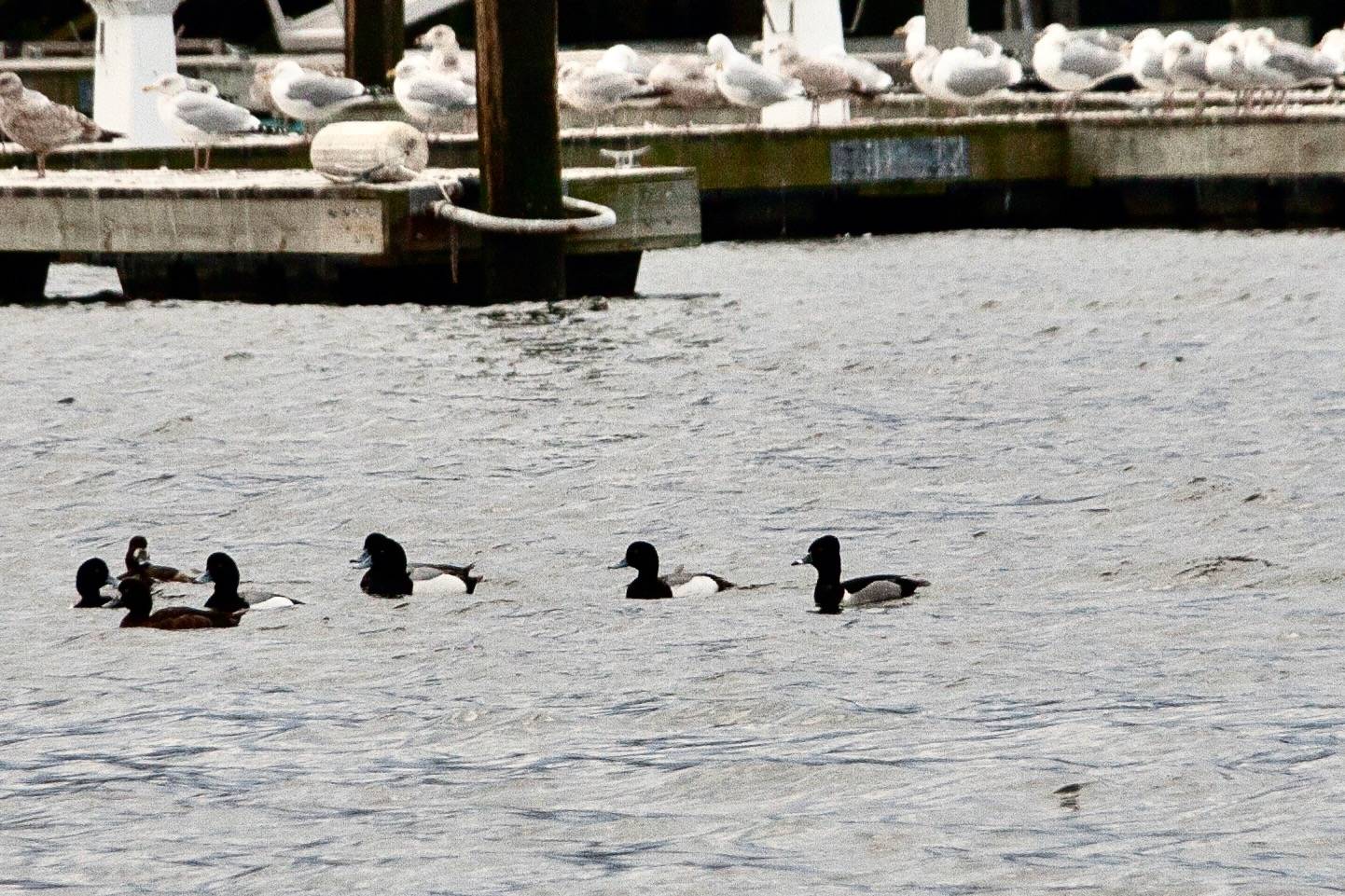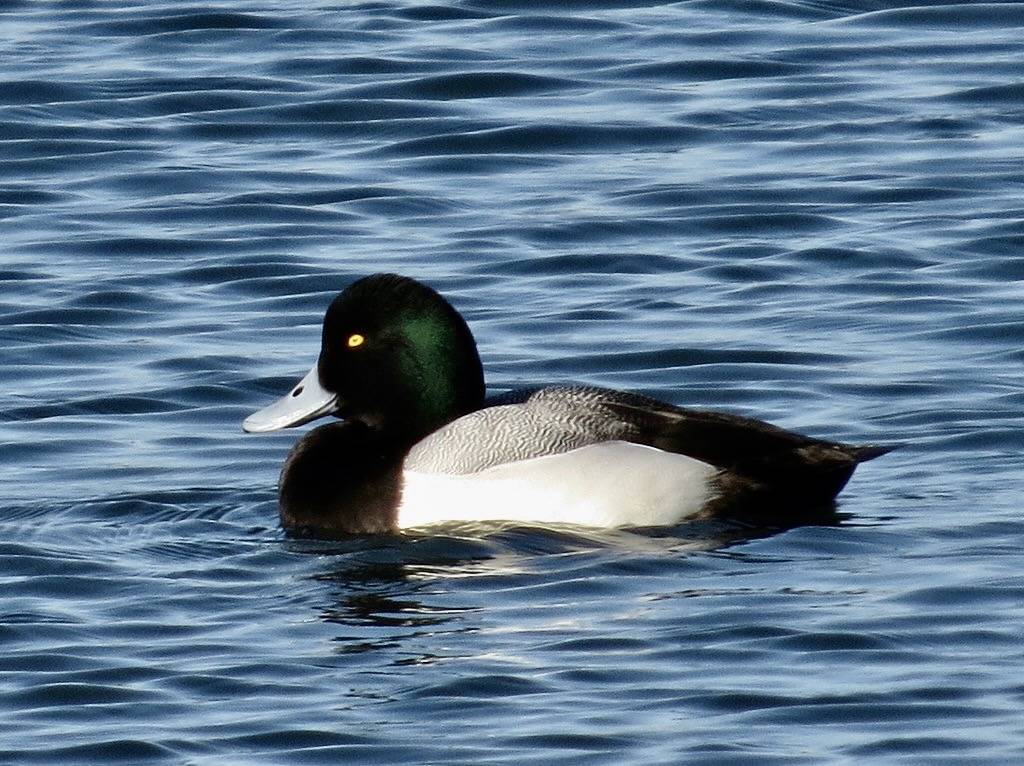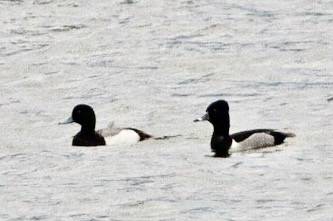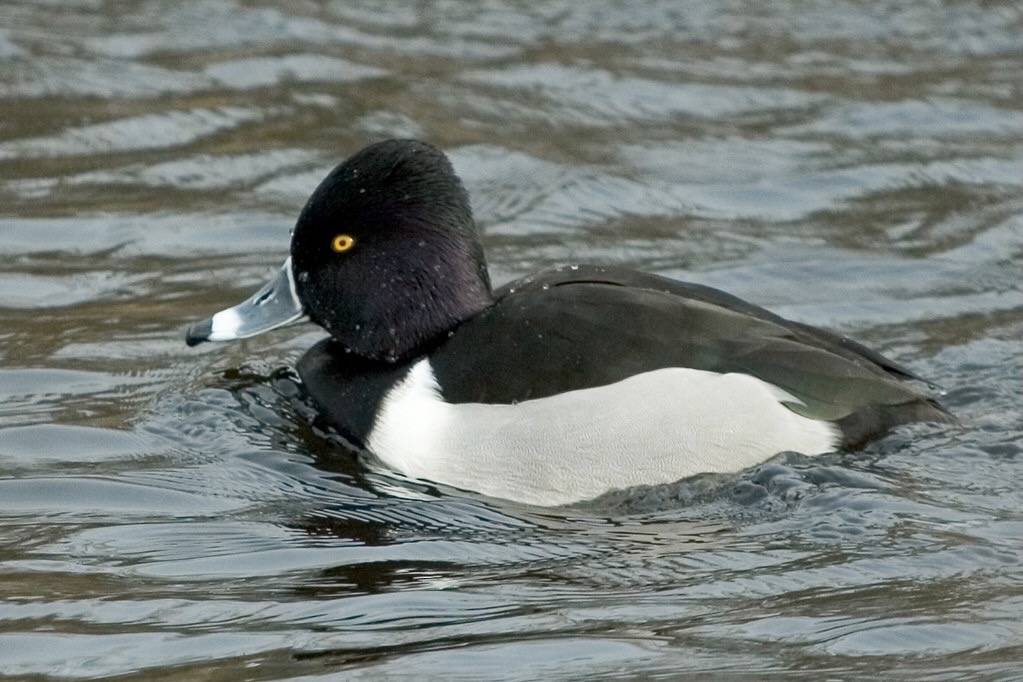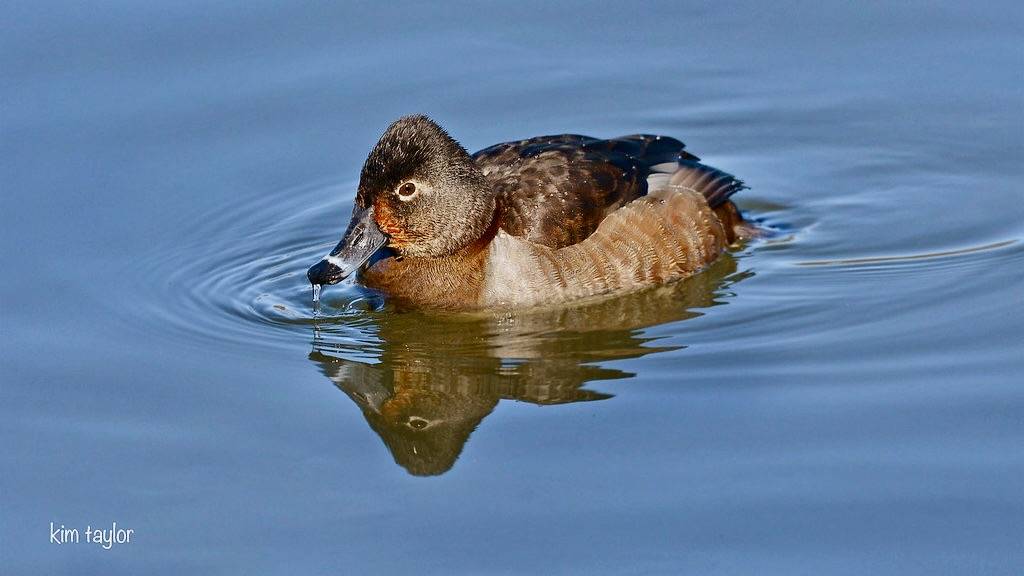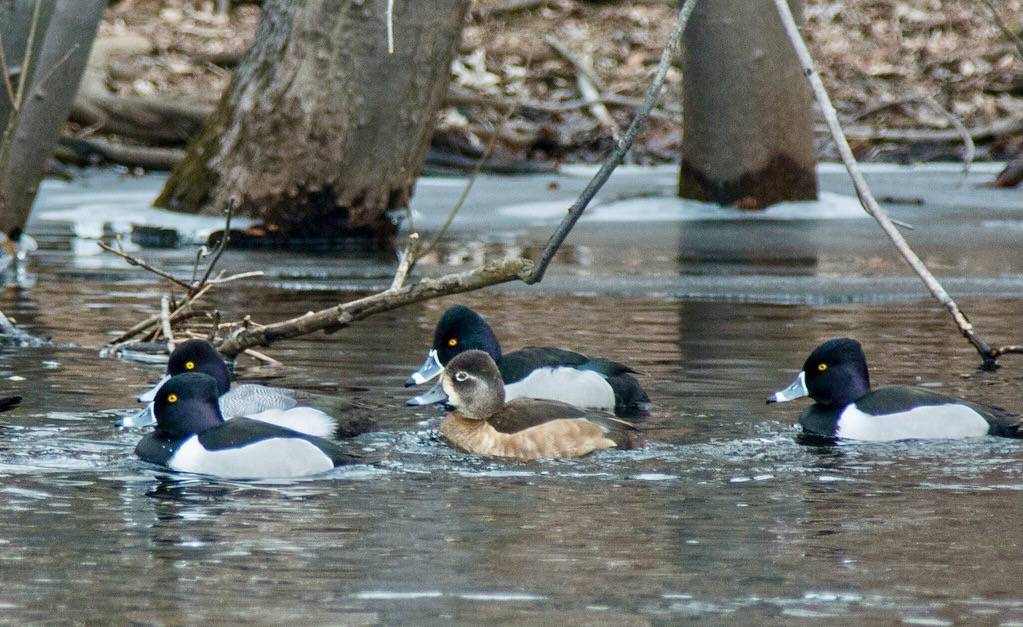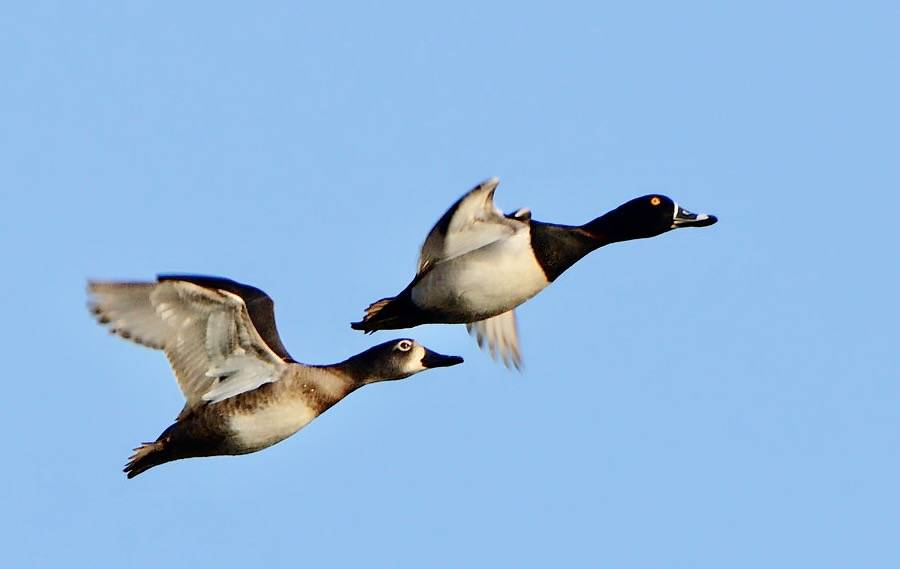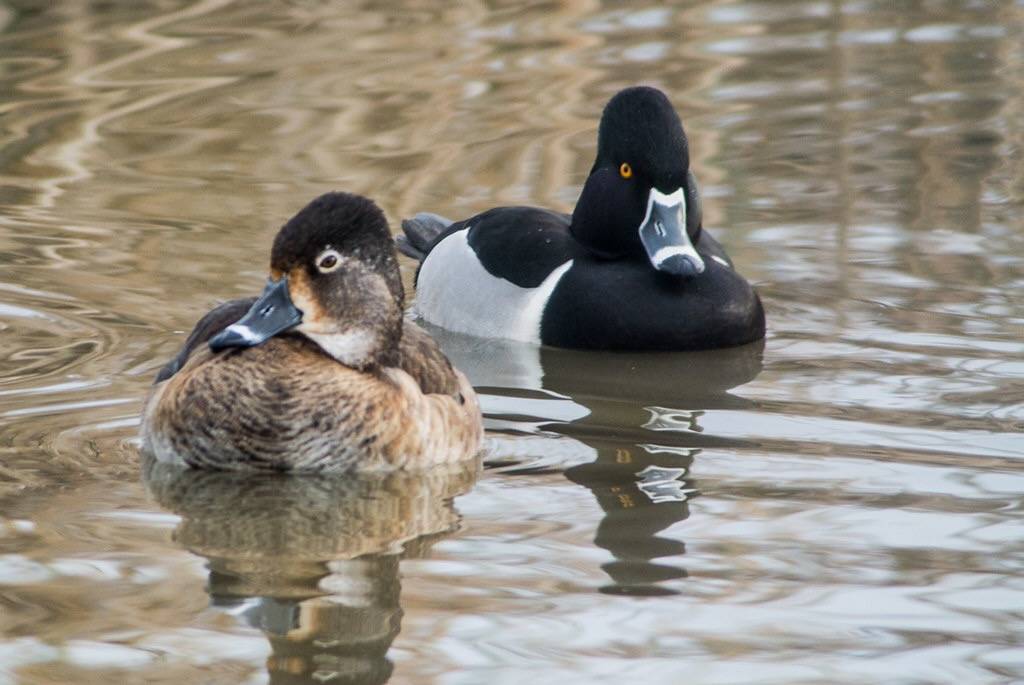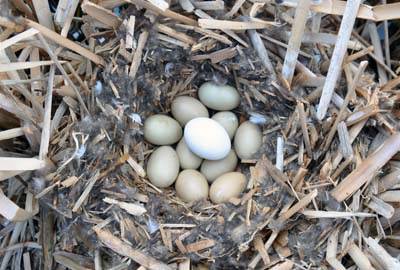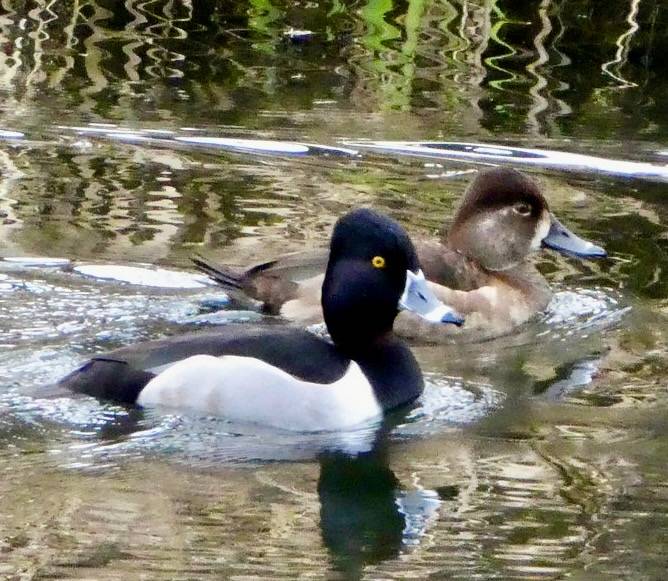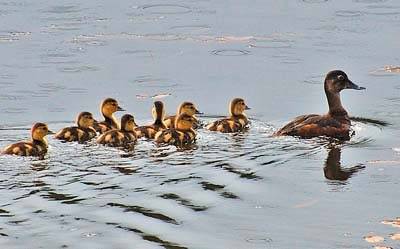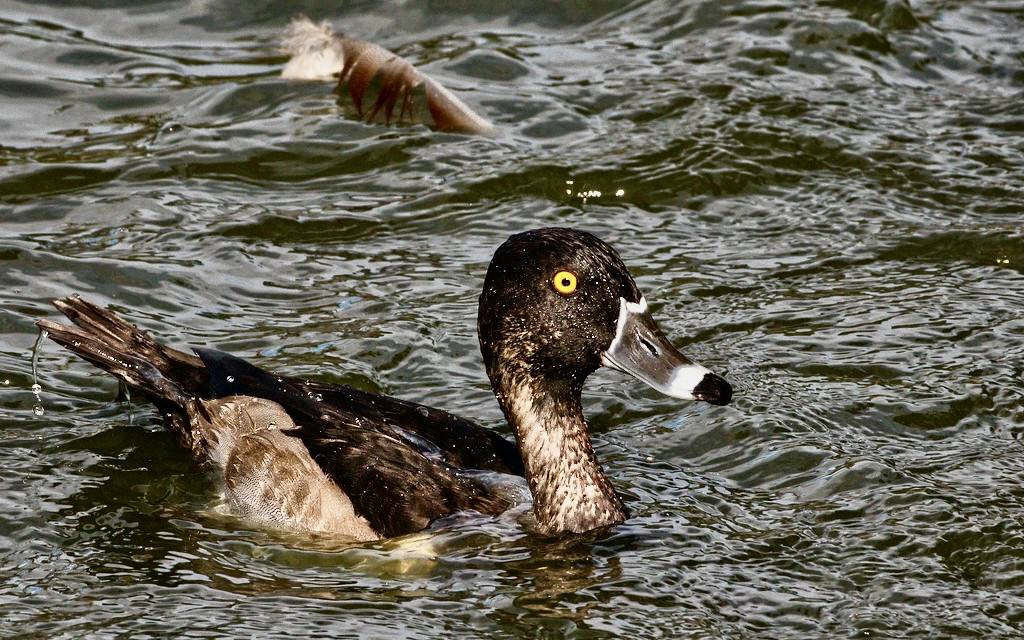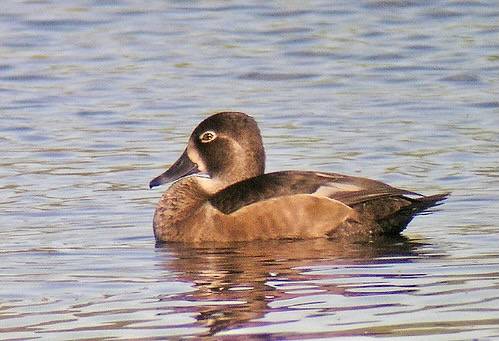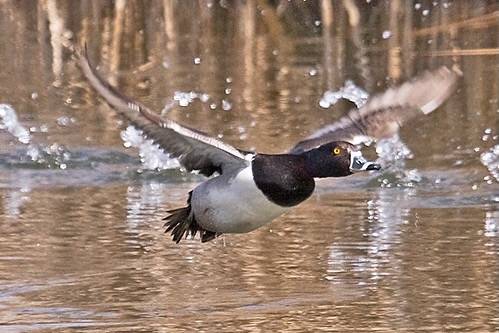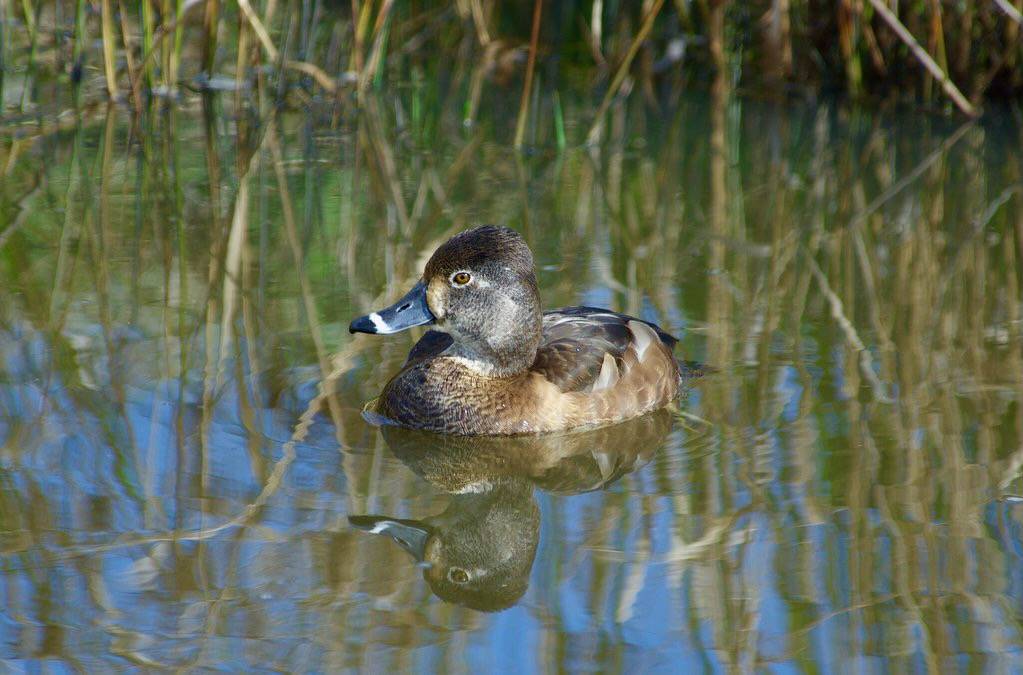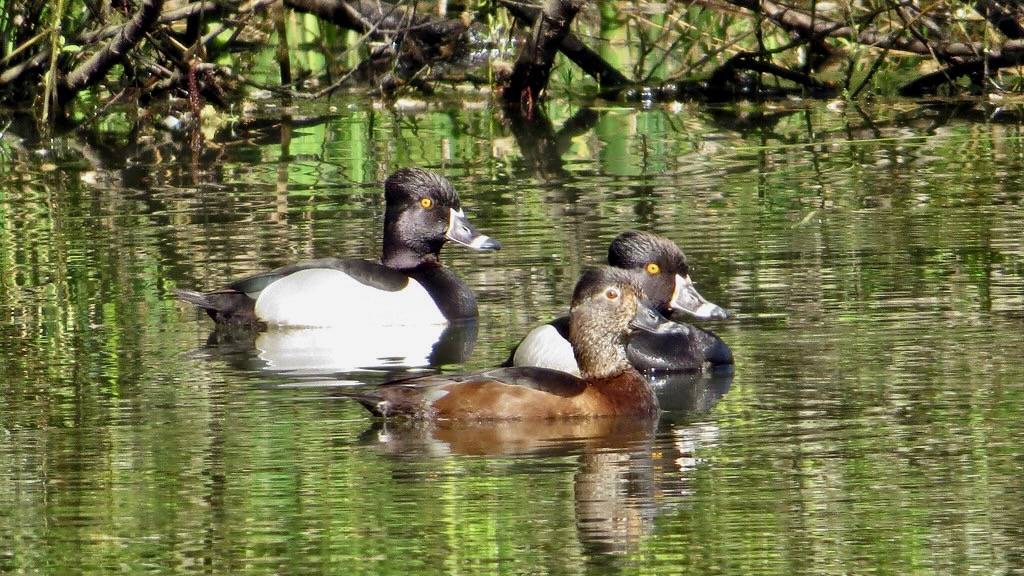Ring-necked Duck
The Ring-necked Duck has only been reported three times at Salter Grove, based on data compiled from 2002 through 2023. A group of three was observed in North Cove in mid-April 2011, and solitary individuals were seen respectively in late February 2012, and late December 2013. The causeway and the northern arm of the breakwater would be potential vantage points for seeing this migrant diving duck.
The chestnut ring around its neck inspired its common name but whereas it is prominent in museum specimens it is usually hidden in living individuals. More useful field characteristics would be its peaked head, the white band above the black tipped bill, the thin white band at the base of the bill, the black back, and the white spike that rises from the white underparts in front of the wing.
The Ring-necked Duck has an extremely large range. It nests in the freshwater marshes and bogs of North America as far north as Southern and Central Alaska, across central Canada, as well as the northern United States. The more southerly breeding populations are sedentary but northern populations migrate to winter in southern New England and the Great Plains, with some venturing as far south as Mexico.
Although categorized as a diving duck, the Ring-necked Duck forages for the same submerged plant materials and invertebrates as dabbling ducks. Instead of just upending its body in place, it uses its feet to dive down for food. Whereas other diving ducks such as the Hooded Merganser or the Red-breasted Merganser are primarily fish-eating, the Ring-necked Duck is omnivorous, feeding on seeds and tubers of submerged vegetation, and also insects, leeches, snails, and other aquatic invertebrates.
However, this habit of feeding on wetland bottoms also means that the Ring-necked Duck is more likely to ingest the lead shotgun pellets that hunters were allowed to use prior to 1991. Studies have shown that lead pellet poisoning interferes with normal metabolic activities in ducks and causes them to be more vulnerable to predation, trauma, and diseases. When lethal amounts are ingested, birds may become emaciated and die within two to four weeks.
Individuals nesting in the northern portion of the Ring-necked Duck's breeding range are only hunted on migration or on their wintering grounds so at least they only risk consuming lead shot outside of the breeding season. The more sedentary southern populations are hunted near their breeding grounds which means that both developing ducklings and adults are exposed to this environmental hazard throughout the year.
Despite the ever present threat of consuming lead shot while foraging, population numbers of the Ring-necked Duck have remained stable because its preferred freshwater habitats of marshes anf bogs continue to be abundant and hunting pressure is monitored and controlled.
For more information:
https://www.allaboutbirds.org/guide/RInsg-necked_Duck
https://www.audubon.org/field-guide/bird/ring-necked-duck
https://en.wikipedia.org/wiki/Ring-necked_duck
https://www.borealbirds.org/bird/ring-necked-duck
https://animaldiversity.org/accounts/Aythya_collaris/
https://seafwa.org/sites/default/files/journal-articles/PETERS-292-298.pdf [Peters, M.S. and Aston A.D. 1993 Blood Lead Concentrations and Ingested Shot in Ring-necked Ducks at Catahoula Lake, Louisiana. Proc. Annu. Conf. SEAFWA 47: 292-298]

